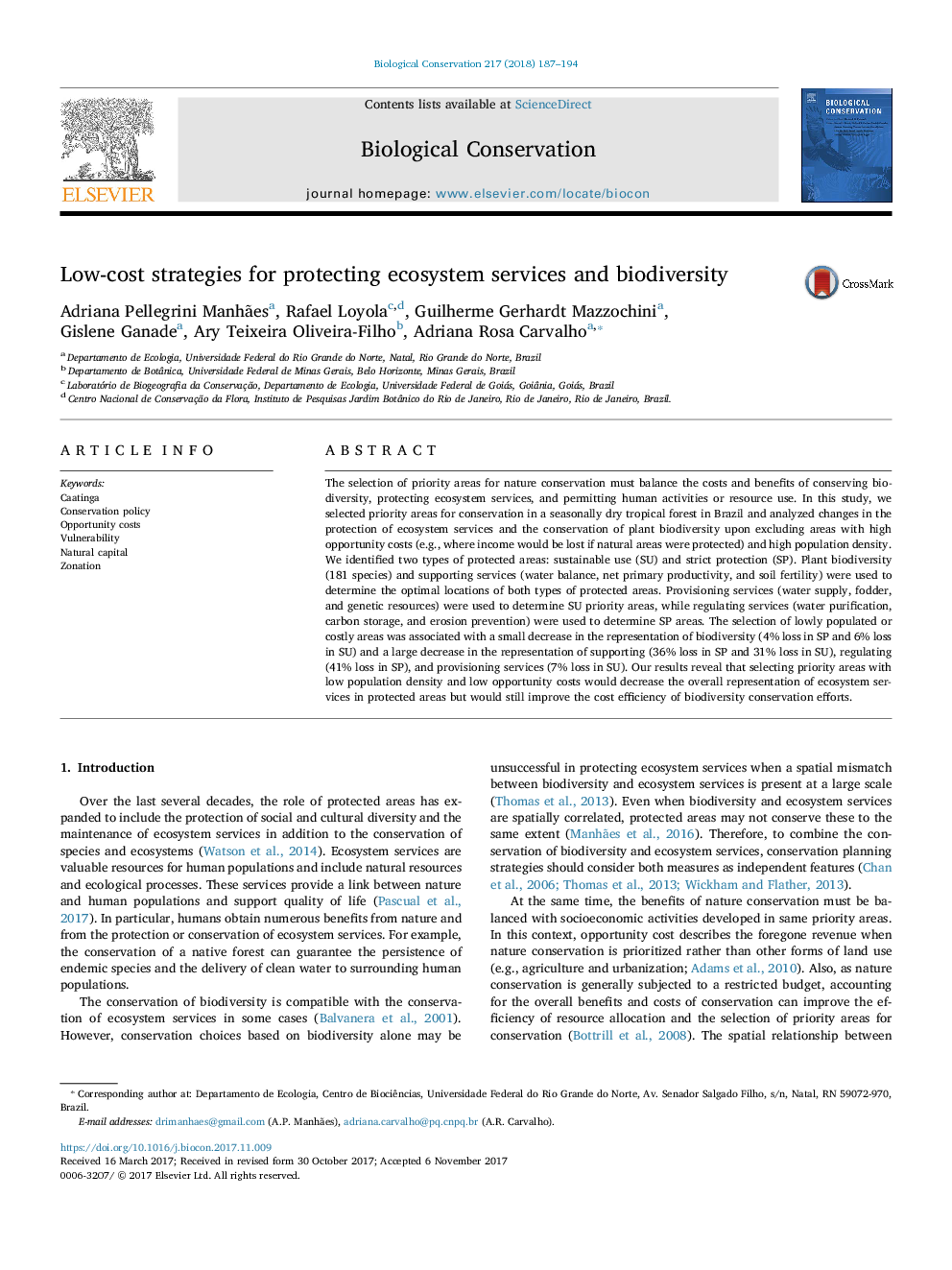ترجمه فارسی عنوان مقاله
استراتژی کم هزینه برای حفاظت از خدمات اکوسیستم و تنوع زیستی
عنوان انگلیسی
Low-cost strategies for protecting ecosystem services and biodiversity
| کد مقاله | سال انتشار | تعداد صفحات مقاله انگلیسی |
|---|---|---|
| 98492 | 2018 | 8 صفحه PDF |
منبع

Publisher : Elsevier - Science Direct (الزویر - ساینس دایرکت)
Journal : Biological Conservation, Volume 217, January 2018, Pages 187-194

